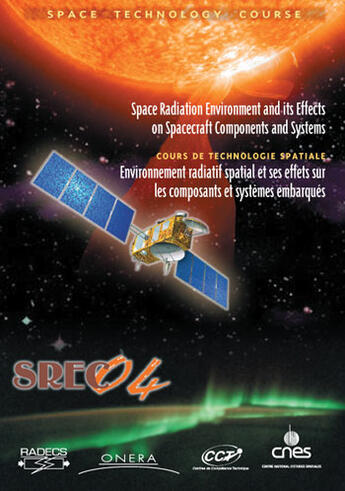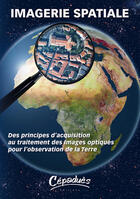Résumé:
Space Technology Course The Space Radiation Environment and its effects on Spacecraft Components and Systems Since J.A. Van Allen Geiger counter on Explorer-I, in 1958, and the loss of the Telstar satellite in 1962 following a high altitude nuclear test, we know that there is radiation in... Voir plus
Space Technology Course The Space Radiation Environment and its effects on Spacecraft Components and Systems Since J.A. Van Allen Geiger counter on Explorer-I, in 1958, and the loss of the Telstar satellite in 1962 following a high altitude nuclear test, we know that there is radiation in space and that this radiation, natural or man-made, can harm spacecraft electronics. Today, space vehicles rely heavily on electronics. Space radiation effects are a major concern in the design phase, and is regularly incriminated as a cause of possible anomalies during mission lifetime. The knowledge of the space environment and the introduction of microelectronics in space technology have evolved together. Both are still in evolution. Large progresses have been made in the last ten years in the fields of environment characterisation and simulation. We now know that this environment is more complex, and above all, much more dynamic than thought before. In the same time, microelectronic technologies have initiated a vertiginous dive, toward more and more tiny structures driving more and more tiny electrical charges. This very fast evolution is unprecedented in the history of techniques, and does not seem to be reaching its end before the next 10 years. Nowadays, the orders of magnitude associated with leading edge components are :- dimensions : 0.1 µm² ( or 0.3 µm x 0.3 µm) for a 1-Gbit DRAM memory cell- time : 1 ps for a 1-GHz processor - charge : 1 µV for a 22-bit analog to digital converter All these values are in the same magnitude order than the characteristics of the interaction of a high energy charged particle with a component. This means that we are beginning to enter a more complex domain than in the past. But this could be a chance, because some radiation effects are becoming to be seen in terrestrial or airborne, large scale commercial applications, due to the sensitivity of such technologies to the atmospheric neutron background. This may drive the main semiconductor companies to interest themselves anew in radiation issues, for the benefit of all. The last ten years have also been marked by major changes in the space world : from a government driven activity, we are moving definitively to a space world with a strong if not major commercial and societal flavour, not favourable to excessive costs and margins. The relief of institutional budget burdens after the fall of the Berlin wall has risen the same concern within space agencies. In the same time, the major semiconductor manufacturers left the space and military market, or, in Asia, never entered it. So we are now somewhat "condemned" to use, for performance and availability reasons, mass production components, not designed on purpose for space use, whose technology features are close to particle characteristics, and this, with the lowest design margin as possible. This is a challenge. For the feasibility and the success of our future missions, we have to understand as far as possible the nature and variability of the radiation environment, and how this environment acts on electronic components. This domain is evolving rapidly in its attempt to keep pace with technology evolution. The incredible boom of computer power and speed in the last ten years, itself boosted by microelectronic technology evolution, gave birth to software tools able to calculate the radiation levels at any shielded point inside a spacecraft, by processing in a reasonable time all the satellite and equipment complex structure. For being used at their full capacity, these tools need to be associated with much more precise environment and radiation effects models, because now the uncertainties and margins are left at these two ends of the problem. This range, from astronomical bodies to the sub-micron world, is an attractive aspect of our field. The aim of this course is to give to the reader the major guidelines for coping with radiation effects on components in today's spacecraft development activities. The Program Committee has assembled a set of contributions addressing the various aspects of the radiation issue. Part I will describe the last improvements in the description of the radiation environment in space. Part II will analyse the various physical effects of this environment on electronics, and how the components can be evaluated against these effects. Part III will try to adopt an application point of view and discuss the possible consequences for the main spacecraft systems, of the radiation behaviour of its flight electronics. Part IV will place the problem in the perspective of a satellite design timeline, and point out the tasks that have to be implemented on each project step. Our hope is that these different views will contribute in giving to the space engineer a both solid and practical "space radiation culture".















